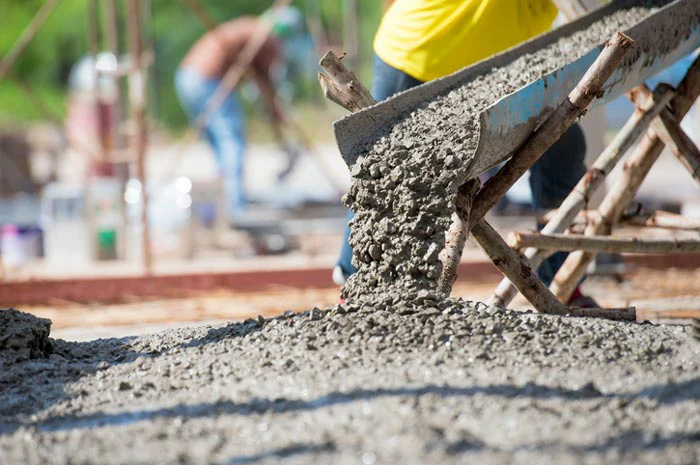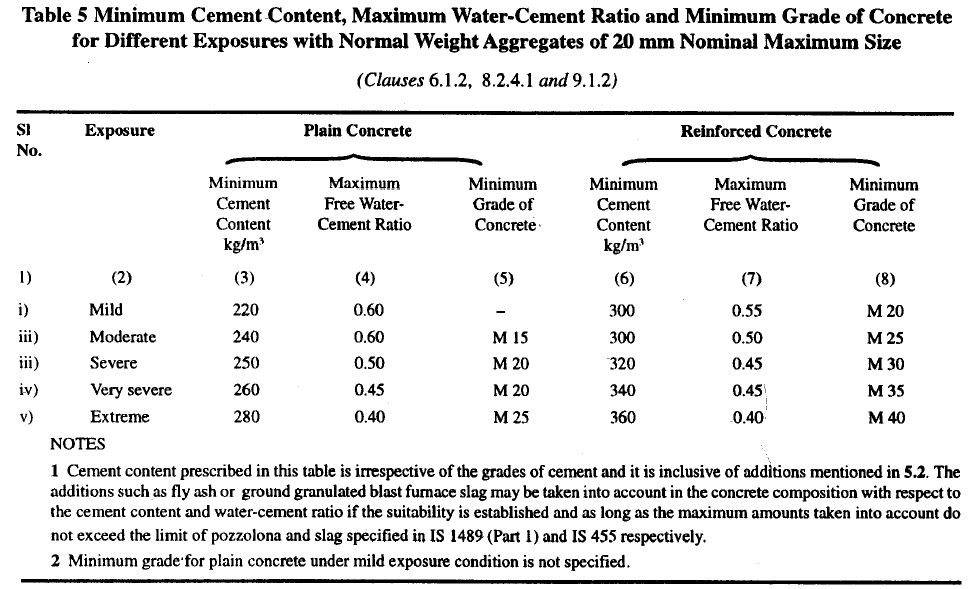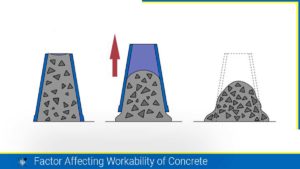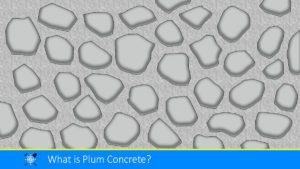What is the Water Cement Ratio?
The water-cement ratio is the ratio of the weight of water to the weight of cement used in a concrete mix. It is an important factor in determining the strength and durability of concrete, with lower ratios generally producing stronger and more durable concrete. The appropriate water-cement ratio can vary depending on the specific requirements of the project and the properties of the materials being used. The water-cement ratio is the ratio of the weight of water to the weight of cement, expressed as a decimal.
The water-cement ratio plays a significant role in determining the compressive strength of concrete. A lower water-cement ratio generally produces stronger concrete, while a higher ratio can result in weaker concrete. It also affects the durability of concrete by influencing its resistance to weathering, abrasion, and other forms of deterioration. Additionally, the water-cement ratio affects the workability of the concrete, or how easily the concrete can be mixed, placed, and finished. A lower water-cement ratio may make the concrete less workable and harder to handle, while a higher ratio may result in a mix that is too wet and prone to segregation.
Also, read: Compressive Strength Of Concrete
How Important is the Water-Cement Ratio?
The water-cement ratio is an important factor in determining the strength, durability, and workability of concrete. A proper water-cement ratio is necessary to ensure that the concrete has the desired properties for its intended use.
The water-cement ratio affects the strength of concrete, with a lower ratio generally producing stronger concrete. It also affects the durability of concrete by influencing its resistance to weathering, abrasion, and other forms of deterioration.
In addition, the water-cement ratio plays a significant role in the workability of concrete, which refers to how easily the concrete can be mixed, placed, and finished. A lower water-cement ratio may make the concrete less workable and harder to handle, while a higher ratio may result in a mix that is too wet and prone to segregation.
Therefore, selecting the appropriate water-cement ratio is critical to ensuring that the concrete is strong, durable, and workable, and meets the specific requirements of the project.

Also, read: Factor Affecting Workability Of Concrete
The Value of Water-Cement (W/C) Ratio.
The appropriate value of the water-cement (w/c) ratio for a concrete mix depends on several factors such as the desired strength, workability, and durability of the concrete, as well as the properties of the materials being used.
The American Concrete Institute (ACI) recommends a maximum w/c ratio of 0.45 for normal-strength concrete and 0.40 for high-strength concrete, while the British Standards (BS) suggest a maximum w/c ratio of 0.6 for normal-strength concrete and 0.5 for high strength concrete.
American Concrete Institute (ACI)
The ACI 211.1 standard recommends the following maximum water-cement (w/c) ratios for concrete mixes:
- For normal-weight concrete, the maximum w/c ratio is 0.50.
- For concrete exposed to freezing and thawing, the maximum w/c ratio is 0.45.
- For concrete exposed to deicing salts, the maximum w/c ratio is 0.40.
- For concrete exposed to sulfates, the maximum w/c ratio is 0.45.
British Standards (BS)
The BS 8110-1, which provides guidelines for the design of reinforced and prestressed concrete structures, recommends the following maximum w/c ratios:
- For normal-weight concrete in moderate exposure conditions, the maximum w/c ratio is 0.60.
- For reinforced concrete in moderate exposure conditions, the maximum w/c ratio is 0.55.
- For prestressed concrete, the maximum w/c ratio is 0.45.
As per the BS 8500-2 standard, which covers the specification of concrete, the maximum w/c ratios for different types of concrete are as follows:
- For normal-weight concrete in moderate exposure conditions, the maximum w/c ratio is 0.65.
- For reinforced concrete in moderate exposure conditions, the maximum w/c ratio is 0.60.
- For prestressed concrete, the maximum w/c ratio is 0.45.
Bureau of Indian Standards
In India, the Bureau of Indian Standards (BIS) has set standards for concrete mix design and the water-cement (w/c) ratio. The appropriate value of the w/c ratio for a concrete mix is typically based on the target compressive strength of the concrete, the maximum nominal size of the aggregate, and the exposure conditions.
As per the BIS guidelines, the maximum permissible w/c ratio for concrete mixes is as follows:
- For plain concrete, the maximum w/c ratio is 0.50
- For reinforced concrete, the maximum w/c ratio is 0.45
The Indian Standard Code 10262:2009 provides guidelines for the design of concrete mix proportioning, which includes the water-cement (w/c) ratio. As per the IS Code 10262:2009, the maximum permissible w/c ratio for different grades of concrete is as follows:
| Grade of Concrete | Water- Cement ratio |
|---|---|
| M15 | 0.6 |
| M20 | 0.5 |
| M25 | 0.45 |
| M30 | 0.45 |
| M35 | 0.40 |
| M40 | 0.40 |
| M45 | 0.35 |
| M50 | 0.35 |
Also, read: What is Concrete Mix Design?
As per IS456: 2000, the water-cement ratio is given in Table 5 for Clauses 6.1.2, 8.2.4.1 and 9.1.2.

how to calculate of Water-Cement Ratio
To calculate the water-cement ratio for the batch of concrete, you need to know the weight of the water and the weight of the cement used in the mix.
The formula to calculate the water-cement ratio is as follows:
Water Cement Ratio = (Weight of Water)÷ (Weight of Cement)
For example, if you have a concrete mix that uses 100 kg of cement and 40 kg of water, the w/c ratio would be:
w/c = (40 kg) / (100 kg) = 0.4
In another example, if you have a batch of concrete that uses 500 kg of cement and 250 kg of water, the water-cement ratio would be:
Water Cement Ratio = 250 kg ÷ 500 kg Water Cement Ratio = 0.5
It’s worth noting that a lower water-cement ratio means stronger concrete, but it also makes the concrete more difficult to work with. The ideal ratio is usually between 0.3 and 0.5, depending on the application.
FAQs
Q: What is the water-cement ratio?
A: The water-cement ratio is the ratio of the weight of water to the weight of cement in a concrete mix.
Q: Why is the water-cement ratio important?
A: The water-cement ratio is a critical parameter in determining the strength, durability, and workability of concrete. An appropriate w/c ratio can help achieve the desired properties of the concrete, such as strength, durability, and workability while reducing the risk of shrinkage, cracking, and other defects.
Q: What is the maximum w/c ratio for concrete?
A: The maximum w/c ratio for concrete depends on the type of concrete, the exposure conditions, and the relevant codes and standards. For example, as per the Indian Standards (IS 456:2000), the maximum w/c ratio is 0.50 for plain concrete and 0.45 for reinforced concrete.
Q: Can the w/c ratio be modified for a specific project?
A: Yes, the w/c ratio can be modified for a specific project based on the project requirements, the properties of the materials being used, and other factors. However, it’s important to ensure that the modified w/c ratio does not compromise the strength, durability, and workability of the concrete.
Q: What is the role of admixtures in the w/c ratio?
A: Admixtures can be used to modify the w/c ratio by reducing the amount of water required for the specific workability of the mix. Admixtures such as water-reducing admixtures can help achieve a lower w/c ratio while maintaining the desired workability of the mix.
Q: Can a lower w/c ratio increase the strength of concrete?
A: Yes, a lower w/c ratio can increase the strength of concrete by reducing the amount of water in the mix, which increases the cement content per unit volume of concrete. However, a very low w/c ratio can reduce the workability of the mix and increase the risk of cracking and shrinkage
References:
- Indian Standard. (2009). Concrete mix proportioning – guidelines (first revision) (IS 10262:2009). Bureau of Indian Standards.
- Indian Standard. (2000). Plain and reinforced concrete – code of practice (IS 456:2000). Bureau of Indian Standards.
- American Concrete Institute. (Year). Standard practice for selecting proportions for normal, heavyweight, and mass concrete (ACI 211.1). ACI.
- British Standards Institution. (2015). Concrete – complementary British Standard to BS EN 206-1 – part 2: specification for constituent materials and concrete (BS 8500-2:2015). BSI.
- British Standards Institution. (2015). Concrete – complementary British Standard to BS EN 206-1 – part 1: method of specifying and guidance for the specifier (BS 8500-1:2015). BSI.
![]()







